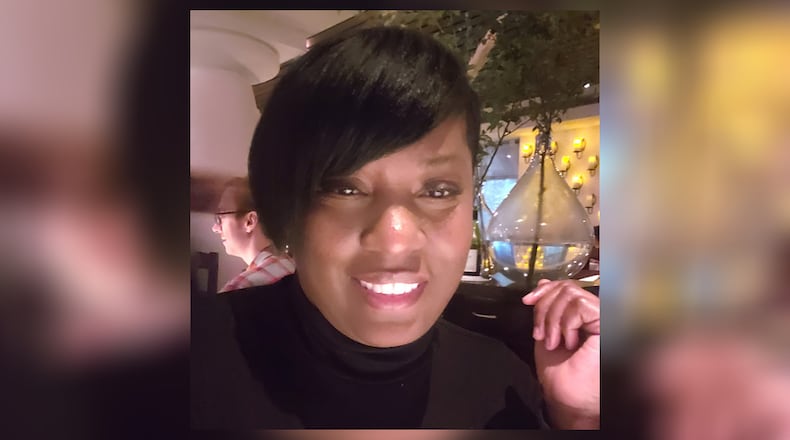In March, as Georgia roiled with skepticism about the true danger of COVID-19, a stark example of the disease’s stealthy power appeared. A 42-year-old mammogram technician at Piedmont Newnan Hospital was found dead in her home, with her young child nearby. The county coroner reported that the otherwise healthy woman had tested positive.
For some, it made the pandemic’s reality sink in. “I had mammograms done at that hospital,” one Twitter user wrote. Others called for more masks and resources.
But as the story began to go viral, Piedmont Healthcare made an announcement. The cause of death was as yet “inconclusive,” it told reporters. “Piedmont Disputes Cause of Death,” reported the Newnan Times-Herald. Days later, the death certificate was issued listing one cause: COVID-19.
Hospitals across Georgia praise their workers for their role in fighting the pandemic. But even as the coronavirus has put a premium on timely communication of accurate information, some hospitals have decided not to provide their communities with information about the numbers of COVID-19 patients they are treating or how many employees have tested positive or died.
Public health experts said that amid such a toll, the instinct of leaders may be to tighten control of information. The hospitals may be trying to protect their “brand” from being associated with the disease, health experts say. Or they may think they are trying to prevent panic.
But that information is important for the public to know so that the reality of the pandemic punches through skepticism, the experts say.
Just looking at the number of infections overall in a government count “doesn’t hit home,” said Christopher Friese, a professor of nursing at the University of Michigan who studies health care safety.
“When you say, ‘the hospital in my community, members of my community are being afflicted by this,’ I think it adds a degree of connection to the problem, and hopefully increases awareness that this is still an issue—that we still need to do all the right things and we need to protect ourselves and our loved ones,” he said.
Decades of research also show that tracking and sharing the numbers of infected health care workers leads to better safety, he said.
Some Georgia hospitals have been meticulously transparent. Emory University and Gainesville-based Northeast Georgia Health System post infection numbers daily on a public website. University Hospital Augusta and Albany-based Phoebe Putney Health System send out regular spreadsheets. Grady Health system sends out occasional updates and has answered news media questions on the numbers.
However Piedmont, Northside Hospital and Wellstar Health System are among the hospital systems refusing to release such information, citing “privacy” or even incorrectly suggesting that doing so would violate the law.
Reports the state compiled early this summer and obtained by the AJC through the Open Records Act show those three health care systems have treated some of the heaviest loads of COVID-19 patients.
The true toll
The AJC asked eight hospital systems in metro Atlanta and elsewhere in Georgia for basic information on what they’ve seen in the pandemic. Even as trends improve and businesses bustle in Georgia, the hospital systems that responded each say they are still treating double-digit numbers of pandemic patients.
Added together, their worker infections to date stretch into the thousands. Each that responded also had workers who died from COVID-19; six died from Grady Health System alone.
The hospitals all emphasized that those workers may have caught the disease outside of work, and that the infections represent a small portion of their overall workforce.
Piedmont and Northside would not answer and did not explain why; Piedmont directed a reporter to public health agencies, and to a tweet from Piedmont CEO Kevin Brown that showed a graph with detailed day-by-day numbers trending down—but that deleted the numbers from public view. Northside did not respond to emails and calls.
Wellstar said it would not provide the numbers “out of respect for our patients and to comply with federal and state privacy laws."
In fact, the law does not prohibit releasing anonymized data, experts say. It prohibits health care providers from releasing information that makes a patient identifiable.
“There’s no violation of privacy” in releasing the numbers, said Erin McDonough, senior vice president of the Harvard-affiliated Brigham and Women’s Hospital in Massachusetts.
The upside
McDonough knows from experience. Barely two weeks after boasting of its low internal transmission rate, her hospital last week reported that it had a COVID-19 cluster. The news erupted across airwaves, websites and social media. The infection cluster now includes 30 employees and 12 patients.
McDonough and her staff issued press releases with the numbers of infections, their locations, infection control weak spots and measures being taken.
They also identified and shared possible causes that may offer lessons nationwide: patients not being masked when meeting masked staff; workers being inconsistent with eye protection; staff not physically distancing while eating; and a staff member continuing to work while experiencing mild symptoms that mimicked allergies.
McDonough said she would never second-guess another hospital. But suppressing information can backfire, she said.
“Put yourself in the shoes of being a patient or a loved one of a patient and you come to a hospital and you expect that you know exactly what’s happening within the walls of that hospital," she said. "And then you learn later that there was a cluster of COVID patients and staff that had tested positive. And no one ever told you that. Would you trust that hospital?”
Scott Steiner, CEO of Phoebe Putney, said transparency has been key to surviving the state’s first major COVID-19 outbreak. That transparency galvanized help, he said.
He knows that the initial response to breaking bad news can be rough. But health and safety and patients' confidence win long term, he said.
“It’s easy to be transparent when things are working your way," he said. “It’s tough to be transparent when you know you’re going to have critics. But that’s OK.”
Releasing information also gives people concrete evidence when preventive measures like wearing masks are working, he said.
That will be all the more important as flu season approaches, potentially doubling the impact of the coronavirus, said Friese, of the University of Michigan.
“We’re coming into a very uncertain time,” he said. "And the way to get through uncertainty is transparency and consistent communication. When we’re not transparent with our information and we’re not consistently sharing that with our community, we put the community at risk for not paying attention to this issue, to not following all the recommendations because it’s ‘out of sight, out of mind.’
“We’re still very much in the thick of this."
Staff writer Alan Judd contributed to this article.
About the Author
The Latest
Featured



